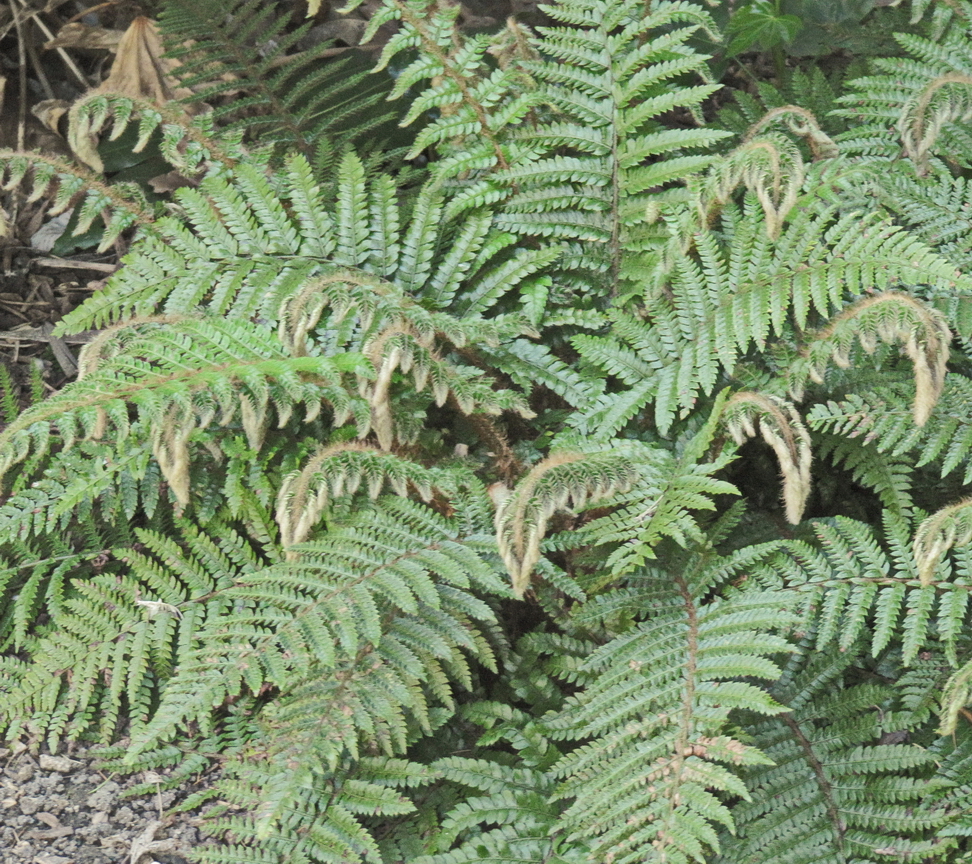
This plant above is what is regarded as a typical fern. However, a quite different looking type of fern played an important role in the development of Earth’s climate around 49 million years ago. Following the asteroid impact which ended the Mesozoic era and ushered in the Cenozoic (Tertiary) era, temperatures over the globe were considerably warmer than they are today. Besides overall trends, there were some notable thermal excursions such as the Paleocene-Eocene Thermal Maximum (PETM), a short interval of maximum temperature lasting approximately 100,000 years during the late Paleocene and early Eocene epochs (roughly 55 million years ago). The interval was characterized by the highest global temperatures of the Cenozoic Era (65 million years ago to the present.) One major contributory factor seems to be the massive volcanic eruption which gave rise to the Giant’s Causeway (N. Ireland) and the Isle of Staffa (Scotland), part of a massive basalt layer extending to Iceland and Greenland.
The temperature spike came and went, but temperatures still continued to rise, with some minor ups-and-downs. But around 50 million years ago, this trend started to reverse. One major hypothesis as to the cause of this is the development of a largely landlocked area of ocean in the arctic regions rather like today’s Black Sea. Over time, a layer of fresher water formed at the surface, allowing the growth of a fern named Azolla arctica, fossilized remains of which have been found in the area. This is known as the Arctic Azolla Event. It has been suggested that this initiated the cooling which led to widespread glaciation at the poles. For a more detailed discussion, I recommend this video.
Here is a picture of a contemporary species of Azolla, floating on the surface of some water:

by User:John Robert McPherson - Wikimedia Commons
That does not look very much like what one imagines as a fern. So one might ask:
When is a Fern not a Fern?
The answer seems to have changed quite a bit in recent years. I have the 1949 edition of WAYSIDE AND WOODLAND FERNS: A GUIDE TO THE BRITISH FERNS, HORSETAILS AND CLUB-MOSSES by Edward Step, which I read assiduously when I developed an interest in these plants during my sixth form years. But the title does not do justice to the variety of Pteridophytes, a somewhat old-fashioned name covering the vascular plants that reproduce by spores rather than seeds, fossils of which appear as far back as the Silurian period.
The first evidence of land plants comes from the early Ordovician (485.4 – 470 million years ago), but these were liverworts (marchantiophytes) which are bryophytes (in the wider sense — the term now tends to be restricted to the mosses.) Like the pteridophytes, these show Alternation of Generations, but in the bryophytes the gametophyte (producing eggs and sperm) is the dominant from, while in the pteridophytes and seed-plants the spermatophyte (producing spores) is dominant. This feature is nicely explained in this video.
Recent studies suggest that both bryophytes and vascular plants may well have developed from a common ancestor:
Tracheophytes refers to plants with vascular tissue, which not only include the pteridophytes but also the seed-plants, including conifers and flowering plants.
First there developed two main branches of the pteridophytes, the lycophytes without vascular tissue in their leaves, and the euphyllophytes in which vascular tissue (veins) developed in the leaves as well as the stems. Two groups of these formed especially tall trees in the forests of the Carboniferous period, among the lycophytes giant clubmosses such as Lepidodendron and among the plants with veined leaves Sphenophyllum, which were giant horsetails.
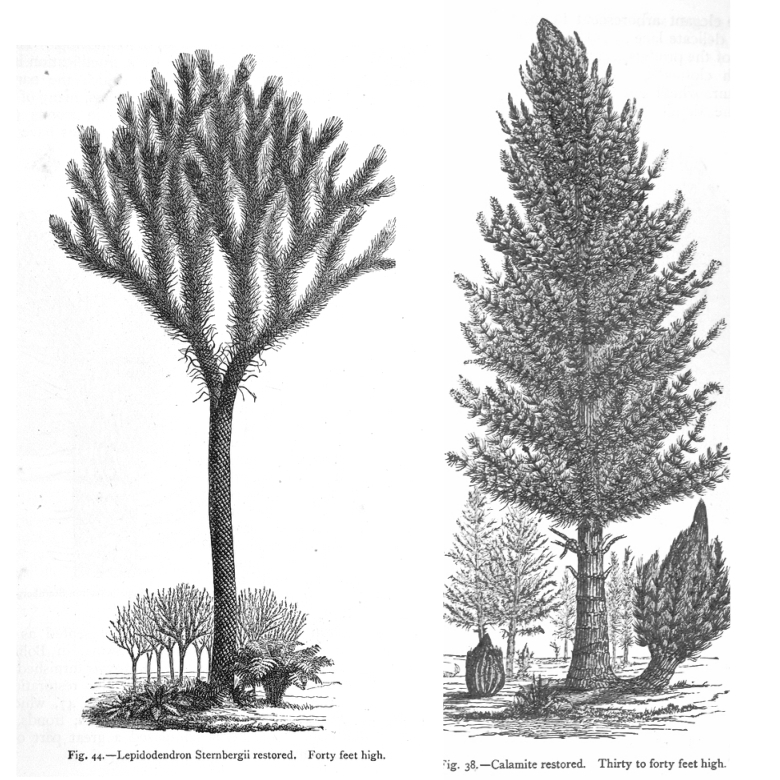 Among the earliest plants with veins in their leaves (let us call them pre-ferns), one group developed heterospory, with microspores, produced in large numbers which would germinate to produce male gametophytes, and megaspores, in smaller numbers which would give rise to the female gametophyte. Even in the late Devonian, these so-called “seed-ferns” [Seed fern | Pteridosperms, Lyginopteridales, Cycadales | Britannica] had fronds with pollen organs and ovules which led to the production of seeds. Further development led to gymnosperms (particularly conifers) which dominated the flora of Earth from about the Permian onwards, with angiosperms (flowering plants) being known from the Cretaceous and dominating today.
Among the earliest plants with veins in their leaves (let us call them pre-ferns), one group developed heterospory, with microspores, produced in large numbers which would germinate to produce male gametophytes, and megaspores, in smaller numbers which would give rise to the female gametophyte. Even in the late Devonian, these so-called “seed-ferns” [Seed fern | Pteridosperms, Lyginopteridales, Cycadales | Britannica] had fronds with pollen organs and ovules which led to the production of seeds. Further development led to gymnosperms (particularly conifers) which dominated the flora of Earth from about the Permian onwards, with angiosperms (flowering plants) being known from the Cretaceous and dominating today.
To return to the ferns proper. Here is a fern classification chart. Originally from Wikipedia, it seems to be based on the work of Joel H. Nitta.
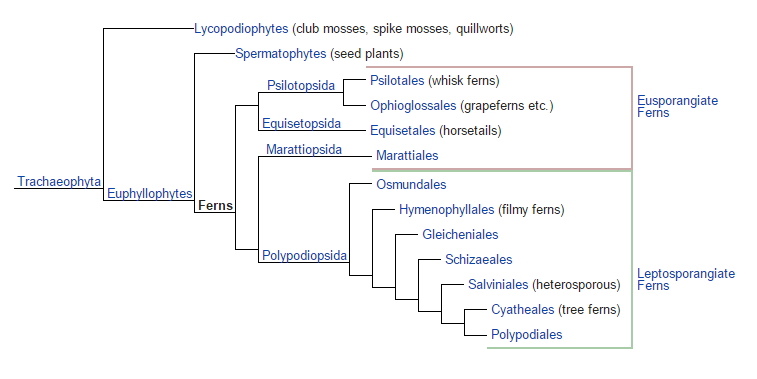
The core group of ferns is known as the Polypodiopsida, which take their name from Polypodium vulgare, its native distribution covering Madeira, Morocco, Temperate Eurasia, S. Africa and the Kerguelen Islands. Here is one growing on top of a wall in Reading, England.
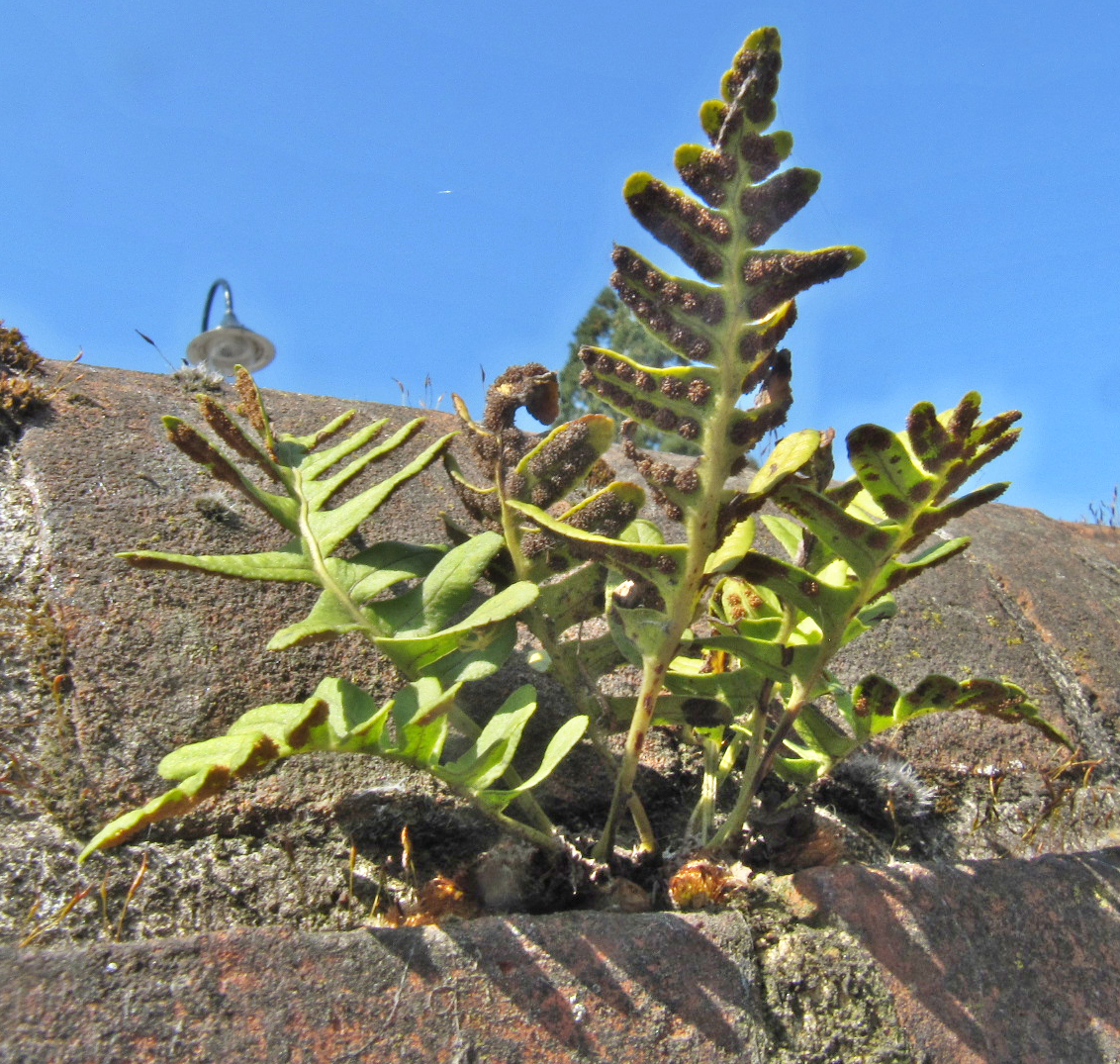
Here is a chart of this core group. Within this group, the water ferns including Azolla are quite close to the main group, while many more ferny-looking ferns such as Osmundales including the Royal Fern (Europe, N Africa, W Asia) and the Cinnamon Fern (N S America, E SE Asia) appear to have diverged earlier in the geologic record.
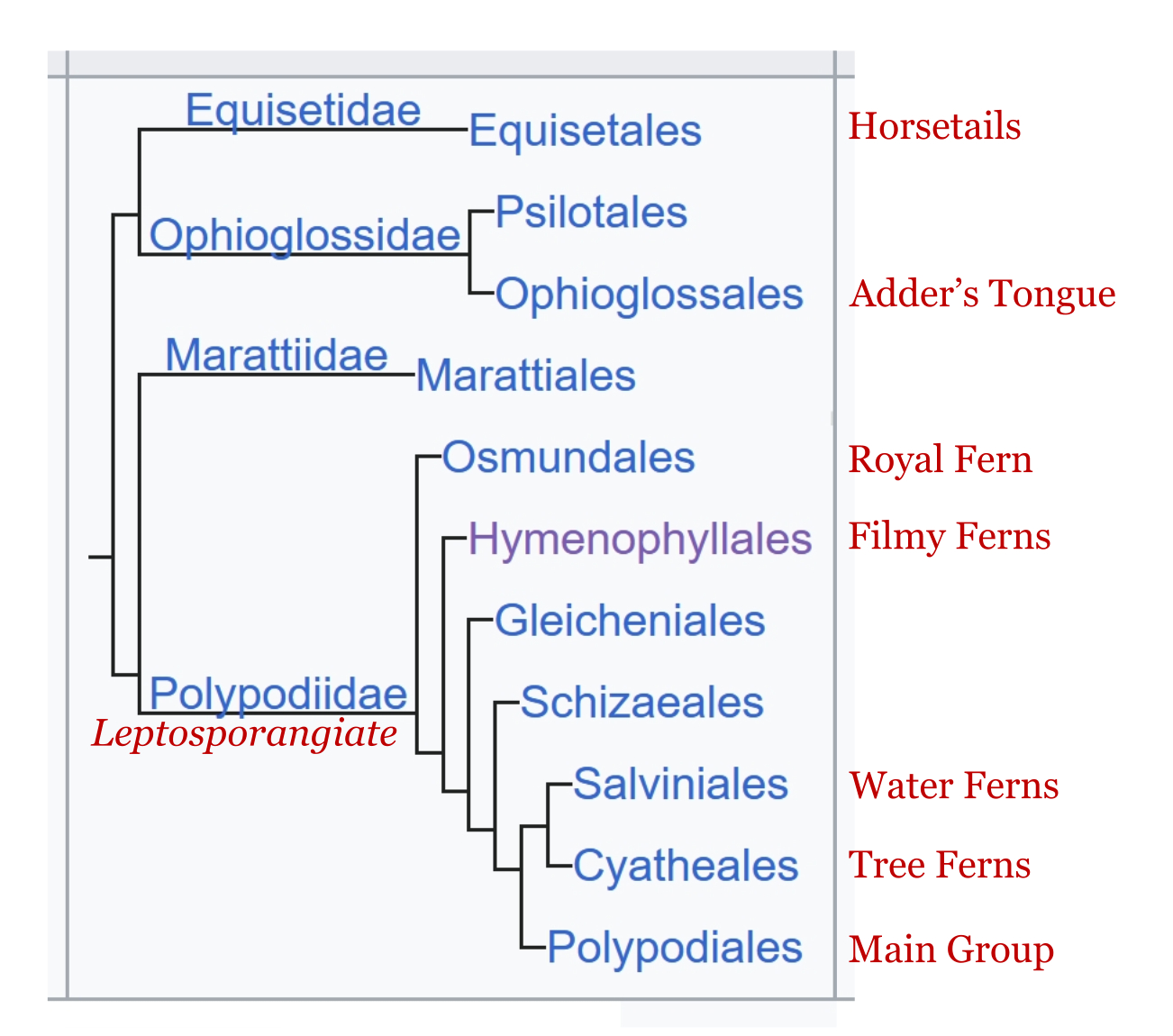
From this chart we see that the Water Ferns, including Azolla, really belong among ferns as we imagine them. I suppose that the nearest parallel is the duckweeds Lemna which, although they look like tiny floating lily pads, are now classified a belonging to related to the Arum family Araceae, which includes many of our favourite houseplants such as the Swiss Cheese Plant Monstera deliciosa, food plants, florist’s flowers (especially Zantedeschia aethiopica the so-called “arum lily”), and Lords-and-Ladies.
Notes:
Heterospory and Seed Habit | EasyBiologyClass
Difference between Microspore and Megaspore | EasyBiologyClass
This core group a ferns are Leptosporangiate, having a specific form of spore development different from all other vascular plants.



Comments